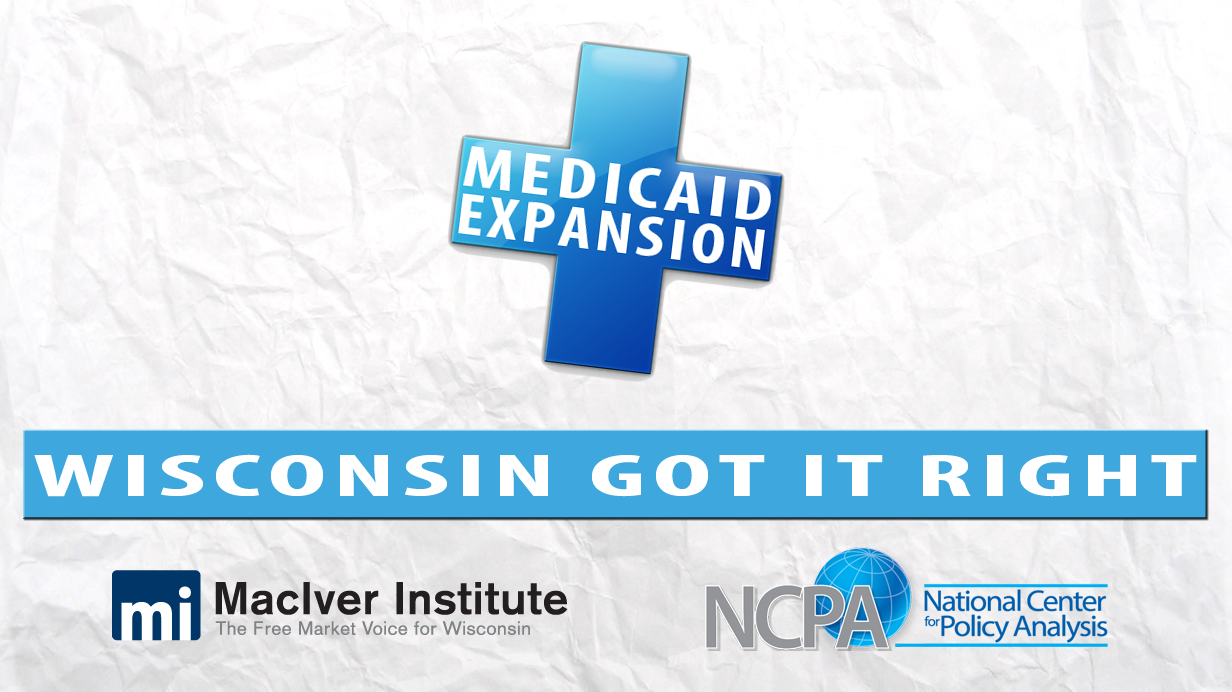
Report By:
Devon M. Herrick
Senior Fellow at the National Center for Policy Analysis
Wisconsin’s breakthrough Medicaid expansion plan sets a standard of cost-effective access for quality care that other states should follow, according to a new study from National Center for Policy Analysis and the John K. MacIver Institute for Public Policy.
The state’s Medicaid program mixes Medicaid expansion with subsidized private coverage, rejecting full Medicaid expansion in favor of a more focused and pointed program. In doing so, Wisconsin maximizes the availability of private coverage for its low-income residents. By rejecting the expansion, taxpayers will save up to $752 million through fiscal year 2017 according to the Legislative Fiscal Bureau.
The study notes that:
- Wisconsin’s plan made private coverage available at little cost to the 62,776 Wisconsinites with incomes above 100 percent of the federal poverty level (FPL) who were transitioned from Medicaid in 2014.
- Shifting these individuals from Medicaid to private coverage allowed Wisconsin to open enrollment in the state’s Medicaid program to 97,059 childless adults earning less than 100 percent of the FPL that did not have coverage previously.
- These changes expanded Medicaid eligibility to everyone living below the FPL while allowing residents living just above poverty to get highly subsidized private coverage through the exchange.
According to the study, individuals on Medicaid have poor access to care because fewer and fewer doctors are accepting new Medicaid patients. The report also points out that physicians are paid far less for patients on Medicaid than private insurance, which actually increases the cost of health care.
In addition to poor access to care, the study backs up data released earlier this year from the Oregon Health Insurance Experiment, which found that health outcomes for individuals on Medicaid are no better than those that are uninsured. The Oregon study also found that Medicaid enrollees visited the emergency room 40 percent more than the uninsured.
Read the full PDF version of the study by clicking here.